It had been several nights now that that fire returned to the fall of darkness. Very hard to explain because no one seemed to have lit it near the old well from which, for some time, water was no longer taken. The recurring fire aroused curiosity, but also fear among the people of the hill of Pozzano, not far from the sea where the brackish breeze came. And none of them had come close.
A few nights later, as a storm approached, the fishermen of Pozzano were pulling boats ashore on the beach, when the Madonna appeared to them, her face covered with a white veil. The Virgin invited them to go to the abandoned well, to retrieve a sacred painting, exhorting them to erect there a church in her honor and assuring its patronage to the people of Stabia. Not even the fishermen, however, went to the well, thinking they had been victims of a collective hallucination. But the following evening the vision was renewed and at that point the fishermen decided to go and tell the bishop about what had happened. Which, as soon as they had explained to him, confessed he had the same vision in a dream. So he organized a procession to the well, completely covered with brambles, so much so that it was no longer visible.
Once the vegetation was removed, the well reappeared and an enclosure was found inside. It was the case of a beautiful perfectly preserved painting, depicting a Madonna, crowned by twelve stars, seated on a throne on a cloud, while nursing the Child, who looks at her. On the sides, in special lunettes, the twelve apostles are depicted.
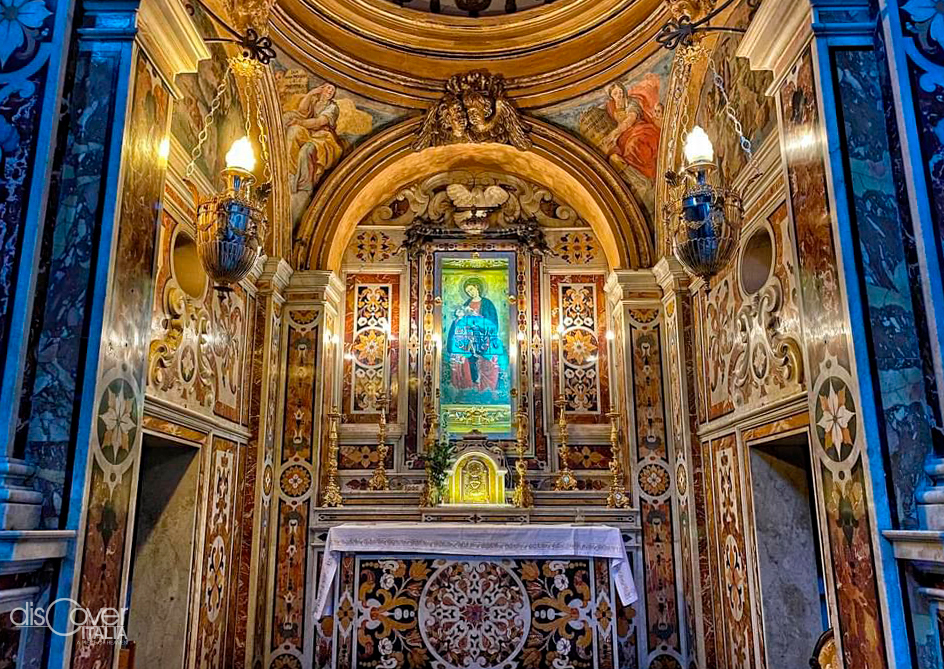
The painting of the Madonna
This is the legend about the finding of the painting on fine linen canvas, of excellent workmanship and in the Byzantine-Constantinopolitan style, of which the author remains unknown. This work, inspired by the Madonna of Constantinople, could date back to a period between the 11th and 13th centuries. Historically, however, the connection with the iconoclasm to which the legend refers, both as the cause of the painting's hiding and as a chronology of its recovery, doesn’t make sense for chronological reasons.
The first church and the Renaissance renovation
The date of the discovery of the painting is unknown, but it is possible to reconstruct the origin of the small church, which was indeed built over the well. It was the queen of Naples, Giovanna II, who recognized privileges to the place of worship of Pozzano in 1419 which, therefore, was pre-existing.
Moreover, on the hill near Castellammare (of which Pozzano is a fraction), then belonging to the Ponzia family, there was a sacred temple to Diana, of which an altar decorated with deer heads, fruits and flowers was re-discovered. And a marble column from the temple, found in 1585, is placed in plain sight with respect to the church entrance.
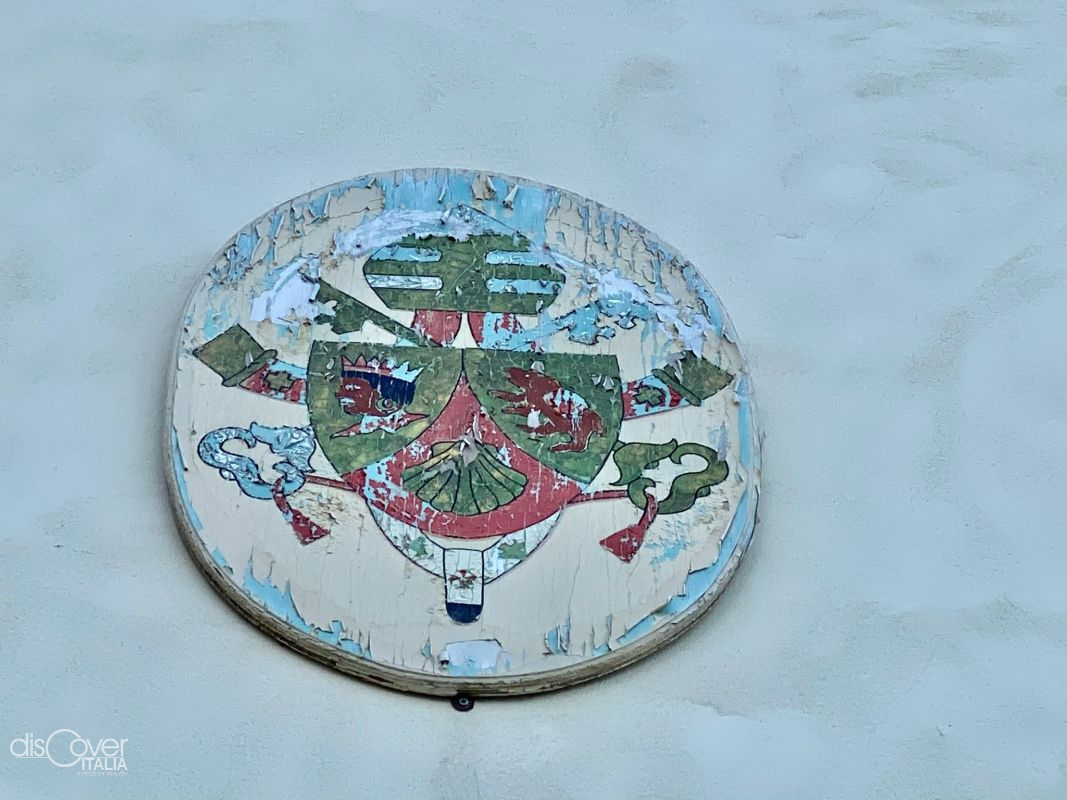
In 1447 the church was entrusted to the Franciscans, who were later expelled by Ferdinand I of Aragon, apparently due to the jealousy of the parish priest. But St. Francesco of Paola, who was traveling to Tours, passing through Castellammare stopped in prayer in front of the painting of the Madonna di Pozzano for three days and three nights. It was then in 1506 that Pope Julius II readmitted the friars. And immediately, in the middle of the Renaissance, the renovation and expansion of the church began, with the approval of Bishop Flores, the governor of Naples Corrado Ferrante and with the funds made available to the great captain Gonzalo de Cordoba. The works lasted over thirty years, from 1506 to 1539. A convent was also built, later the sacristy and the bell tower were added.
Very simple lines connoted (as still today) the facade with three portals, of which the greater one in the middle, dominated by a protruding broken tympanum. Above a polychrome glass window with a cross and, even more above, a triangular tympanum with a rose window inside.
Inside, the church was and remained a Latin cross, with a large central nave and four side chapels on each side: on the right the chapels of St. Giuseppe, the Adoration of the Magi, Sant'Anna and Beato Nicola da Longobards; on the left, of Sant’Emidio, of Santa Lucia, of the blessed Luigi Hultrel and of the Divine Mercy The precious coffered ceiling was built with the offerings of the Municipality of Stabia in 1675.
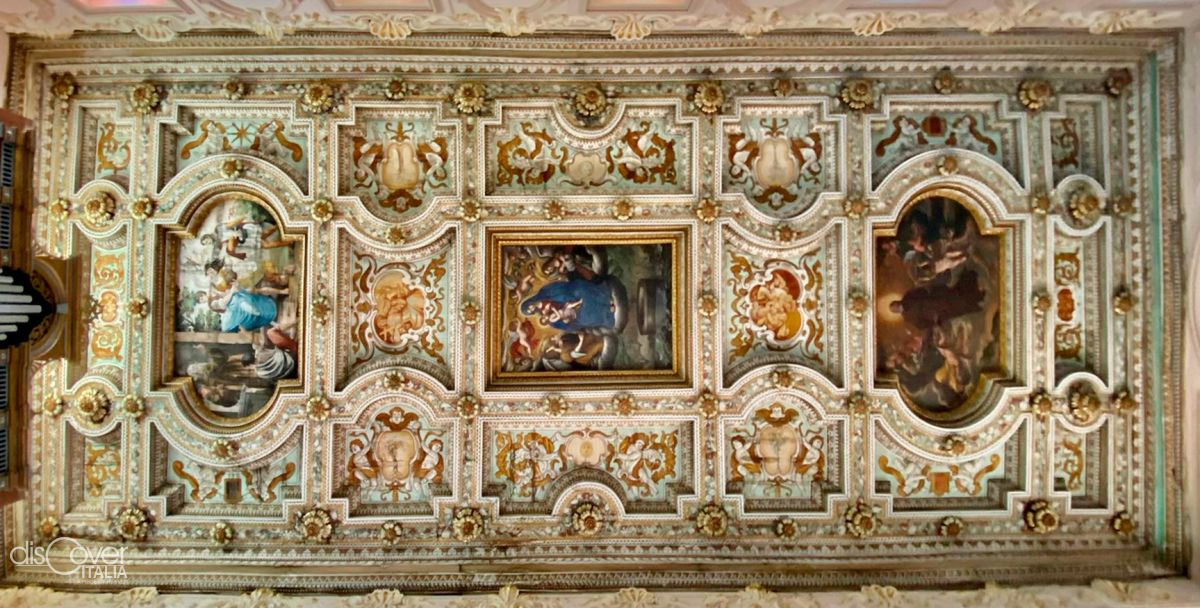
From the 18th century church to the present day.
A further expansion arrived in the 18th century, in line with the prevailing Baroque. The main altar was renovated and the chapel of San Francesco da Paola was erected instead of the right transept, in front of the chapel of the Madonna di Pozzano, which is located on the left. Many embellishments and important paintings were introduced, signed by the most fashionable artists of the moment.
With the abolition of religious orders in the early 19th century and with the friars gone, a less brilliant period began, if not of decline. However, on June 26, 1874, Monsignor Saverio Petagna solemnly consecrated the sanctuary to Our Lady of Pozzano and the following year, on July 2, 1875, the painting of the Virgin was crowned. A new return of the friars took place only in 1895 and thus the convent with the adjoining garden could also be recovered.
In 1916 it became a papal basilica under Pope Benedict XV. During the First World War, the complex was used as a hospital and then as an orphanage for the children of the fallen. The bombs fell numerous in the Second World War, with heavy damage to the structures. And the subsequent recovery sacrificed the cloister with important paintings on the life of San Francesco da Paola. More destruction was caused by the 1980 earthquake. To heal these wounds, restorations were required, completed only in 2006.
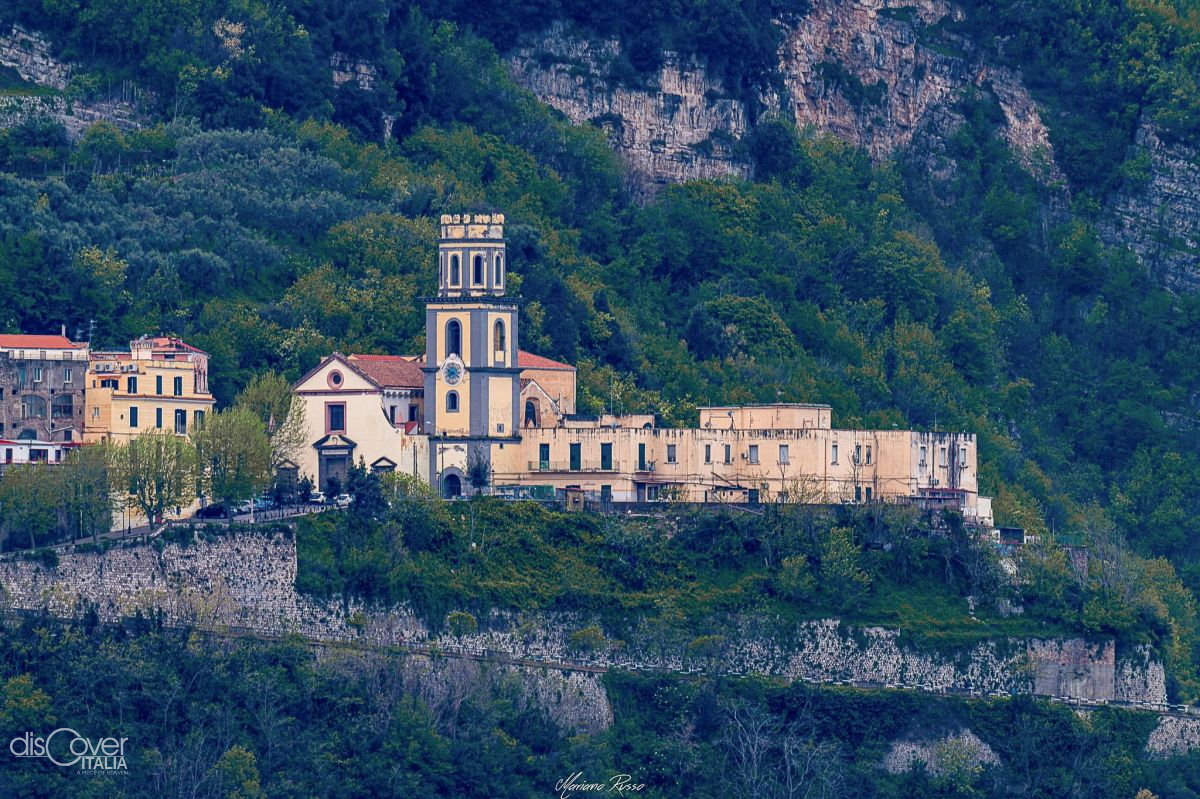
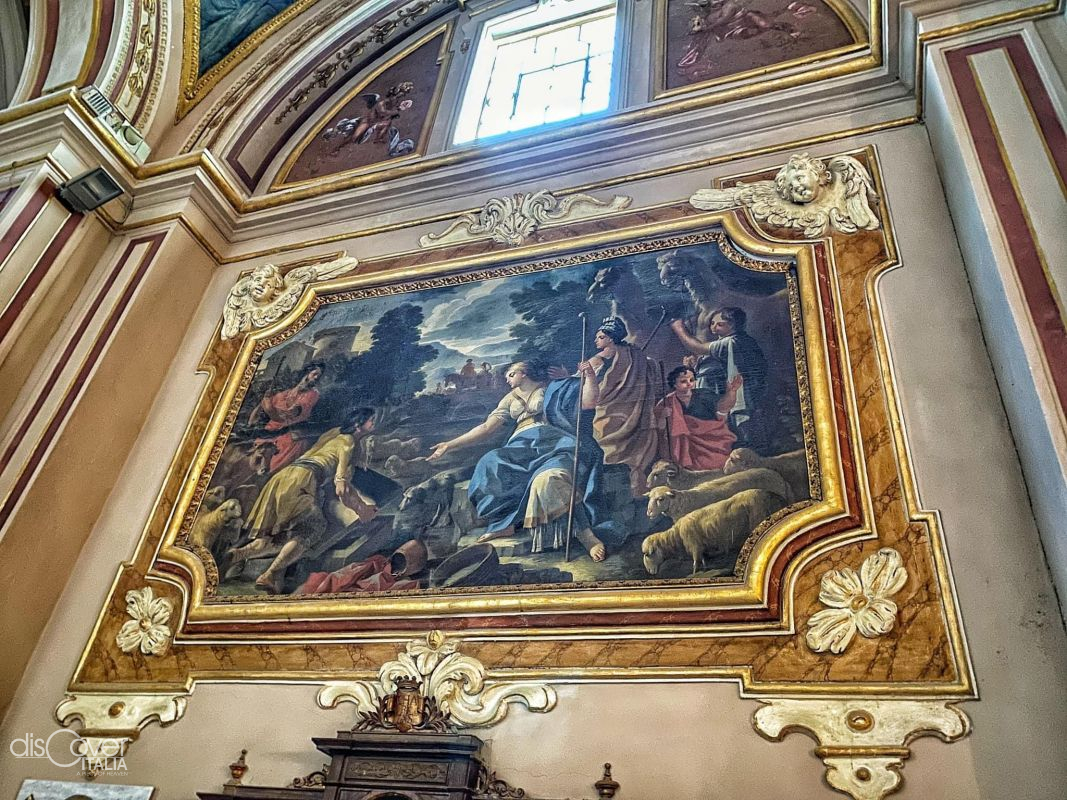 The works of art
The works of art
The ceiling, designed by Bonaventura dei Cistercensi, was embellished with a table and two canvases by Michele Regola.
The Baroque high altar, in polychrome marble, is closed by a balustrade by the Ragozzino brothers. Above it is a canvas depicting Archangel Gabriel escaping the demons, while on the sides you can admire the canvases of the Nativity and the Prison of St. Gerolamo, both by Paolo De Matteis. The wooden choir with two rows of stalls dates back to the 17th century. For the Jubilee 2000 a new Eucharistic table with 17th century capitals was placed.
The 18th century Chapel of St. Francesco da Paola, in Baroque style, houses a wooden statue of the Saint, between two marble columns covered with perch flowers, while in the arch there are four oval stucco canvases by Girolamo Cenatiempo.
On the opposite side, there is the chapel dedicated to the Madonna di Pozzano that resembles a small temple decorated with precious friezes, yellow and green Sicilian breccias, mother of pearl and lapis lazuli. The frescoes represent the life of Mary and the episode of the discovery of the painting, with canvases by Bernardino Fera that reproduce the biblical scenes of wells.
During the most recent restorations, in 1994, the works in the transept returned paintings by Sebastiano Conca.
The miracle of the Crucifix and the sacristy
In 1631 Vesuvius returned to erupt ash and lapilli with great violence, sowing death and destruction on its slopes reaching even Naples. On 6 December the choir of the Shrine of Pozzano Bartolomeo Rosa called a solemn procession towards the cathedral. As the procession proceeded near the sea, a statue of the dead Christ without the cross was seen floating on the water. The statue was brought ashore and, as we were about to lead it in procession, a ray of sunlight made its way into the gray sky due to the fall of ashes, crowning Christ's head with light and so it was, for the rest of the journey. At the end of the procession, the officiant blessed the crowd with the crucifix: at that moment the eruption stopped. And in Castellammare there were no victims.
Since then the statue has always been carried in procession on Good Friday. During the rest of the year it is kept in a reliquary decorated with cherubs on the high altar of the sacristy of the sanctuary, therefore also known as the Chapel of the Crucifix. Built in 1545, rebuilt in 1754 based on a design by Luigi Vanvitelli. With a rectangular plan, in Baroque style, the walls, decorated with pilasters with elegant capitals, house three large paintings by Sebastiano Conca. On the ceiling, a 1769 painting by Giacinto Diano celebrates the Apotheosis of St. Francesco da Paola. Eight doors connect it with the church, the convent and the choir.
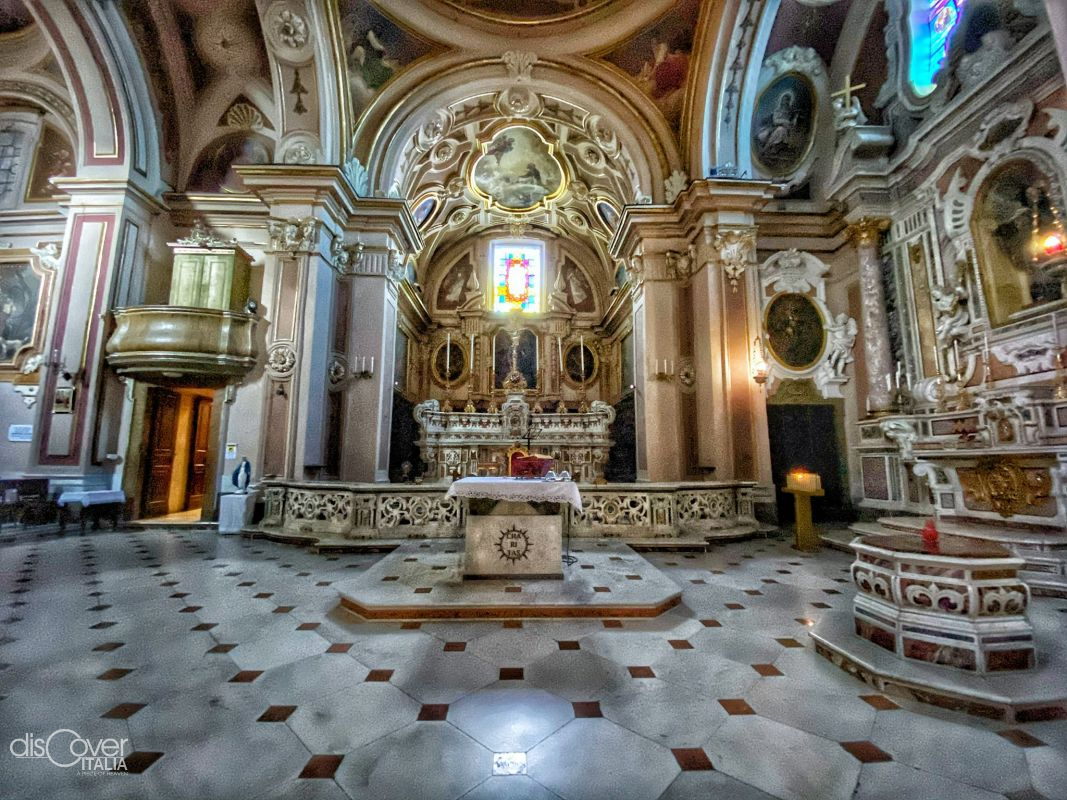
The crypt
The well of the discovery of the painting of the Madonna is located in the crypt, built after the oldest church and dedicated to the Madonna del Carmine. Rebuilt in the last century, consecrated in 1904, on the high altar donated by Pius X there is a 16th century basrelief depicting the Virgin of Carmel and the souls in Purgatory. Illustrious personalities from Stabia's history are buried there.
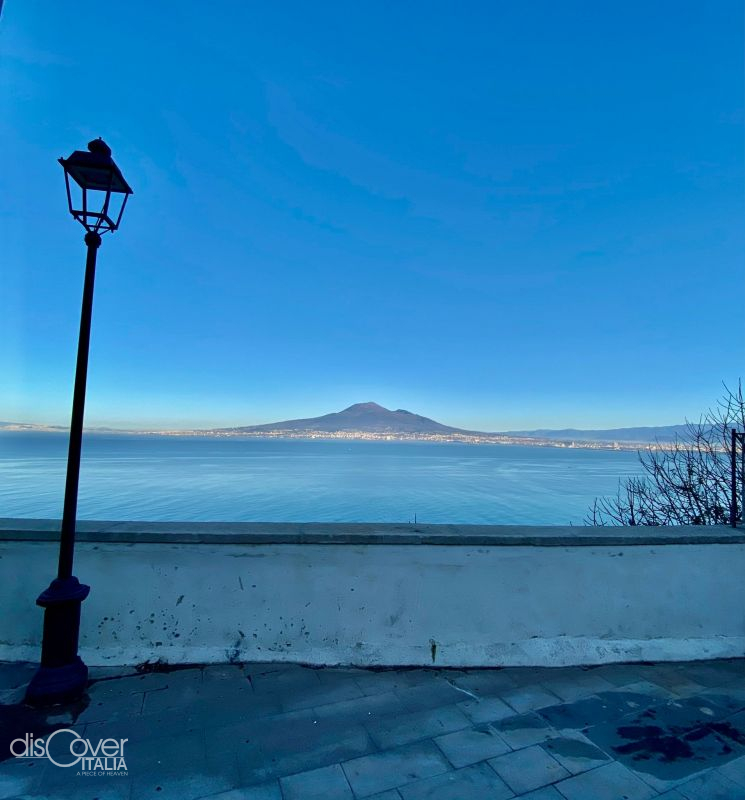 The bell tower
The bell tower
A bell tower was needed for the new church in Pozzano. But also a tower that, taking advantage of the strategic position of the hill south of the town of Castellammare, made it possible to spot the Saracen fleets approaching the coast in time. Thus, in 1584 the 33-meter bell tower was built next to the sanctuary, with this dual purpose. With a square plan at the base, in the upper registers, the bell tower has an octagonal shape and is completed by a battlements. In the center, a celestial majolica clock tells the time. And the churchyard of the sanctuary, surmounted by a cross, is a magnificent viewpoint overlooking the panorama of the Gulf of Naples, Vesuvius and the coast of Stabia.
Copyright video, foto e testi © 2020



Comments powered by CComment